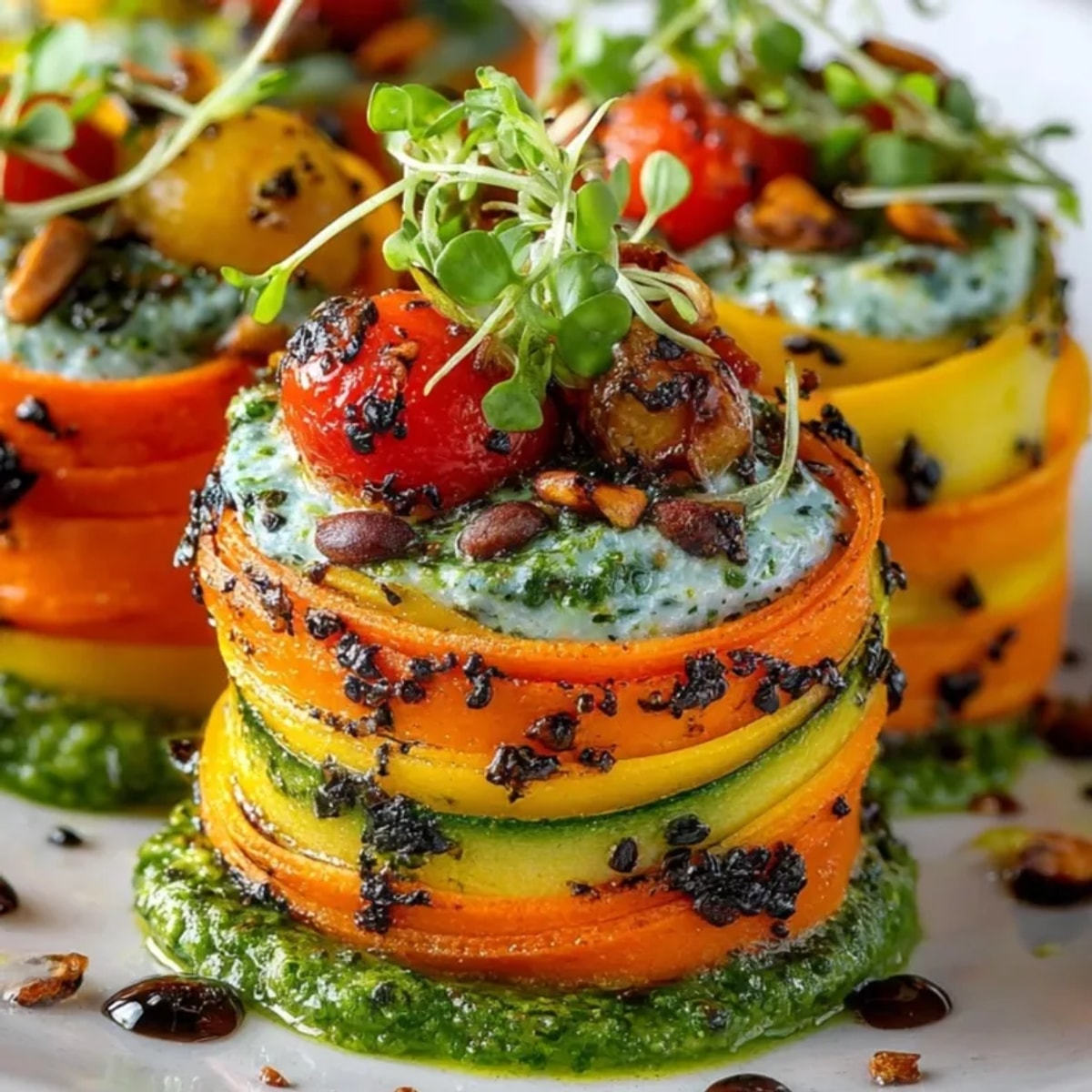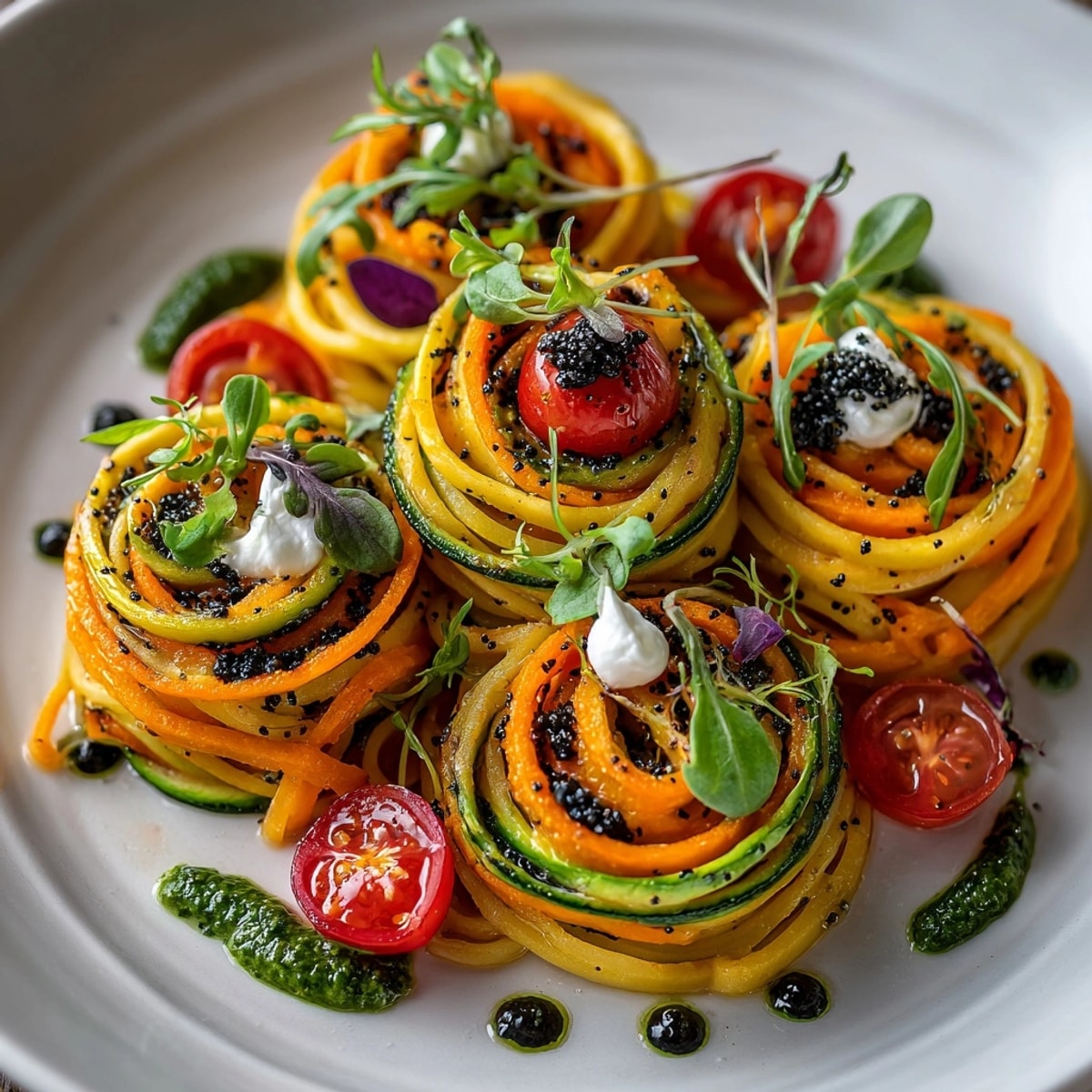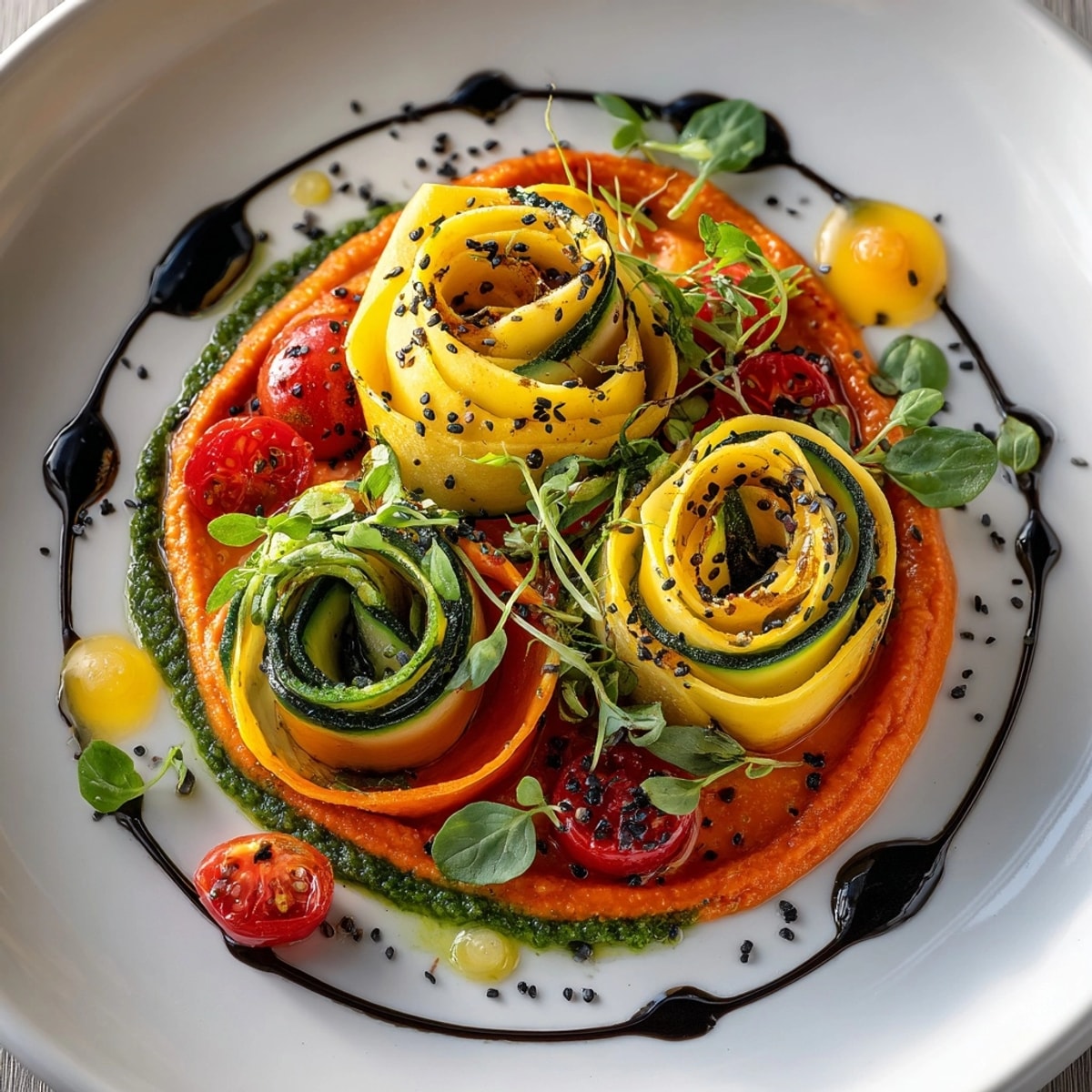 Save
Save If you want to wow your guests and yourself with a plate that looks straight out of a high-end restaurant, this geometric pasta plating recipe should be at the top of your list. With bold color contrasts, crisp lines, and architectural arrangement, it turns everyday ingredients into a dazzling modern Italian fusion masterpiece. Designed for dramatic photos and maximum flavor, this dish transforms routine pasta night into an event worthy of your Instagram feed.
The first time I tried geometric plating at home it instantly became the most requested birthday dinner at my house—the bright sauces and tidy pasta nests make my kitchen feel like an art studio.
Ingredients
- Pappardelle or tagliatelle pasta: brings movement and height to your plating use a bronze-cut variety for sauce cling
- Olive oil: for flavor and for keeping the noodles from sticking select a fruity extra virgin for best aroma
- Roasted red pepper: delivers sweetness and intense color homemade or jarred both work as long as it is smooth
- Basil pesto: infuses deep green color choose a vibrant premade or make your own for a burst of freshness
- Ricotta cheese: provides creamy richness and a neutral tone opt for a whole milk variety for texture
- Lemon juice: brightens the ricotta and balances the dish only squeeze fresh lemons for best flavor
- Zucchini and carrot: add crunch and contrast pick the firmest vegetables for easy ribbon shaving
- Cherry tomatoes: give sweet-tart pops and visual symmetry choose the ripest glossy ones
- Microgreens: lend freshness and that extra chef-touch look for perky leaves with no wilting
- Toasted pine nuts: bring nutty crunch ensure they are golden but not burnt
- Black sesame seeds: give a punctuation of color and depth use fresh for best aroma
Instructions
- Boil the Pasta:
- Fill a large pot with water and add a generous amount of salt. Bring to a boil and add the dried pasta. Stir gently to prevent sticking then cook to al dente usually one or two minutes less than the package suggests. Drain well and toss with olive oil to separate the strands and prevent clumping.
- Prepare the Vegetable Ribbons:
- While the pasta is cooking use a mandoline or vegetable peeler to shave the zucchini and carrot into long thin ribbons. Immediately submerge the ribbons in ice water to keep them crisp and firm until plating.
- Make the Sauces and Ricotta Mix:
- For the red pepper puree blend roasted red pepper with a sprinkle of salt and olive oil until it is completely smooth and vivid. For the ricotta mixture combine ricotta cheese with lemon juice and a pinch of salt then stir until creamy and spreadable.
- Create the Geometric Sauce Designs:
- On a large flat plate use a spoon or squeeze bottle to draw clean lines sharp triangles or bold circles with both the red pepper puree and basil pesto. Alternate colors for maximum contrast and keep edges defined for a professional look.
- Form Pasta Nests and Place with Angles:
- Use a large fork and tongs to twirl the pasta into tight nests or even squared-off mounds. Gently arrange each nest at a dramatic angle exactly on top or in alignment with your sauce shapes for visual harmony.
- Arrange Vegetable Ribbons Artfully:
- Drape or fold the zucchini and carrot ribbons around and between the pasta nests. Place them in tidy lines or geometric folds following your sauce patterns. This adds height and dynamic lines to the plate.
- Dot the Plate with Ricotta Mixture:
- Using a teaspoon or a squeeze bag pipe or spoon tiny dots of lemon ricotta around the dish. Keep your layout symmetrical or in geometric groupings for a polished finish.
- Scatter Final Garnishes:
- Halve cherry tomatoes and arrange them in deliberate patterns. Sprinkle microgreens around the dish for a final flourish. Lightly strew toasted pine nuts and black sesame seeds over the top to introduce texture color and balance.
- Serve Immediately:
- Bring the finished plate straight to the table and encourage your guests to admire the angles lines and fresh colors before digging in. For best results serve while all components hold their shapes and crispness.
 Save
Save My favorite part the basil pesto always makes the kitchen smell like summer. Once when my niece visited she lined up all the garnishes in rainbow order and left us all grinning before dinner even began.
Storage Tips
Store leftover pasta and vegetables separately in airtight containers in the refrigerator to maintain texture and defined shapes. Reapply sauces and garnishes fresh right before serving again to retain that crisp edge and visual appeal. The ricotta mixture can be made a day ahead but the final assembly is best just before eating.
Ingredient Substitutions
Swap out pappardelle or tagliatelle for gluten-free pasta if needed or try spiralized zucchini for a completely grain-free plate. Use almond ricotta or whipped tofu instead of dairy ricotta for a vegan version. Roasted beet or carrot puree makes a stunning alternative to red pepper for a different color story.
Serving Suggestions
Serve this plated dish as a dramatic main course for a date night or dinner party. Pair with a dry Italian white wine or sparkling water with a twist of lemon to let the colors shine. For additional flair finish with edible flowers or a drizzle of infused oil for guests to swirl in before eating.
Cultural and Historical Context
Geometric plating is a growing trend in modern Italian fusion cuisine drawing inspiration from both classic minimalist art and traditional Mediterranean flavors. Restaurants worldwide now serve dishes as edible sculpture and home cooks have caught the bug thanks to social media. This dish bridges the comfort of Italian pasta with the precision of fine dining design.
Seasonal Adaptations
Switch your vegetables with the season for endless variation Try golden beet or squash in fall or ribbons of fresh asparagus in spring Herb purees like mint or cilantro keep colors fresh in the warmer months
Success Stories
This dish has won best photo at more than one family gathering and more than a few friends have messaged me for tips after seeing it on my feed. Kids love to help make the patterns and choose the color arrangement. Even the pickiest eaters seem to enjoy the interactive plating part as much as the eating.
FreezerMeal Conversion
You can prepare the sauces and roast vegetables in advance and freeze them in small containers. The pasta itself is best cooked fresh to maintain the perfect texture but a well-prepped freezer stash of purees makes weeknight plating fast and fun.
 Save
Save This geometric pasta plating recipe transforms pasta night into an edible art event. The bold colors and architectural arrangement will impress your guests and make your dishes shine.
Recipe FAQ
- → What pasta types work best for this dish?
Pappardelle and tagliatelle offer broad, flat surfaces that hold sauce and keep structured nests. Other wide ribbons can also work.
- → How do you achieve sharp geometric shapes with sauces?
Use squeeze bottles or the back of a spoon to create lines and triangles, alternating colors for contrast on a flat plate.
- → How can vegetable ribbons stay crisp and vibrant?
Prepare ribbons with a mandoline or peeler, then chill in ice water until plating to maintain color and texture.
- → What are some ways to customize the colors?
Add beet puree or squid ink for depth, or incorporate edible flowers for even more visual flair and appeal.
- → How should garnishes be arranged for impact?
Scatter microgreens, cherry tomatoes, pine nuts, and sesame seeds in defined patterns, keeping symmetry and angles in mind.
- → Can this be adapted for gluten-free diets?
Yes, simply use a high-quality gluten-free pasta to maintain both structure and flavor while remaining inclusive.